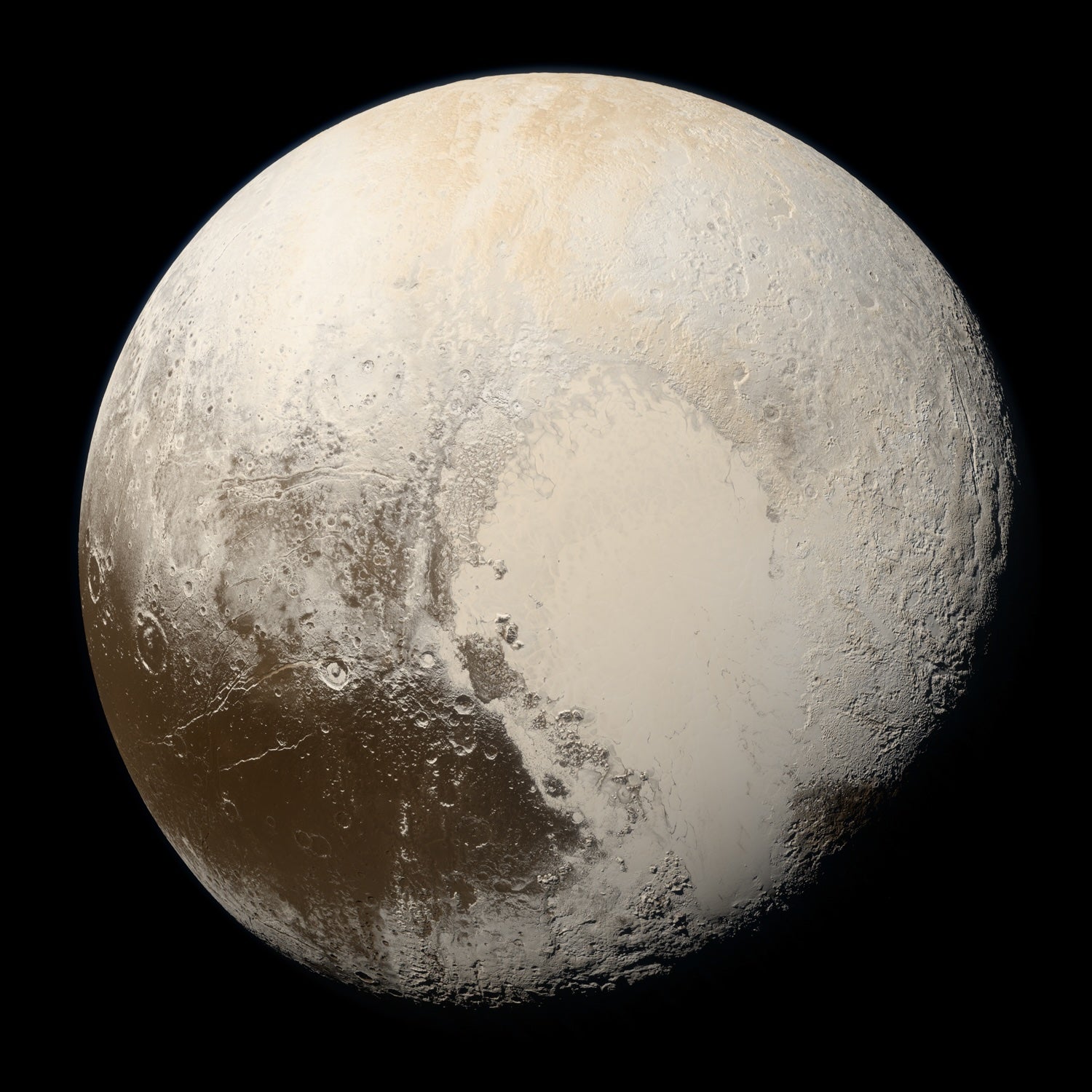
In 1930 a young astronomer from Kansas, employed as an observer at Lowell Observatory in Arizona, discovered Pluto. It was the first planet in the solar system to have been discovered since 1846, when astronomers in Germany detected Neptune. Clyde Tombaugh, just 24 at the time, was hailed as a hero, Disney named a cartoon dog after the new planet, and for 76 years the solar system was a happy place.
And then, in 2006, the International Astronomical Union (IAU) reconsidered Pluto’s status. In a controversial vote, astronomers — not planetary scientists — “demoted” Pluto to the status of being classified as a dwarf planet, taking away one major planet and reducing the number in our solar system to eight. Astronomers suddenly took sides, seeing various sides in the logic, and schoolchildren all around the world were heartbroken, having been enamored with the story of the most distant and mysterious planet that was discovered by a young, self-educated researcher, and having that status heartlessly yanked away.
Related: Astronomy editors answer: is Pluto a planet?
I’m glad that Clyde wasn’t around to see the demotion. He was a wonderful guy — a funny guy — who I got to know pretty well during the last two decades of his life. He was a joy to be around, and a huge fan of puns. “What do you call an angry crow?, he would blurt out as you sat under the stars, say, at the Texas Star Party. “A raven maniac.” Oh, Clyde. All the group could do was moan and then giggle at his stream of jokes and puns.
But back to Pluto. For many years prior to Pluto’s reclassification, astronomers had come to realize that the Kuiper Belt, the cloud of small bodies in the outer solar system, holds countless thousands of icy objects, and some of them are relatively large. Would astronomers eventually have a situation in which they had many more planets to add to the equation? Nerves began to be rattled. Pluto, some reasoned, could be the tip of the iceberg of an entirely new class of countless objects.
The rules for planets
The key moment came at the 2006 meeting of the IAU in Prague. The IAU put forth three important criteria for planetary status: 1. A planet orbits the Sun. 2. A planet is massive enough to exist in hydrostatic equilibrium. That’s a fancy way of saying that it is spherical. And 3. A planet has “cleared its neighborhood” of smaller bodies within its orbit. Pluto meets the requirements for the first two categories, astronomers reasoned, but it has not cleared its orbit of smaller bodies. Thus, in late 2006 the IAU gave a present to Pluto — a reduced importance and the designation 134340 Pluto, designating it a dwarf planet (with an asteroidal nomenclature).
The world’s press writers had a field day with poor Pluto. They went wild. The story seemingly wouldn’t go away. Prominent Caltech astronomer Mike Brown, leader of a team that had discovered many asteroids, wrote a book titled How I Killed Pluto and Why It Had It Coming. In New York, Neil Tyson at the Hayden Planetarium moved the Pluto model away from the planets and grouped it with the small bodies of the solar system. In an enormous reaction, schoolchildren everywhere took up the fight and shed many a tear.
The issue again came to prominence when the historic New Horizons mission was underway and, in 2015, commenced its flyby of the distant world, discovering moons and a system that is far more active, on Pluto and its largest moon Charon, than anyone had suspected.
The goalposts were moved, perhaps unfairly
The logic behind the IAU decision came under intense scrutiny once again. Pluto clearly orbits the Sun and is spherical. It is the third criterion, the “clearing of bodies,” where the confusion lies. This qualification is ambiguous at best, and perhaps flawed. Many planetary scientists remain skeptical of this idea because it biases against objects of smaller size with increasing distance from the Sun. A house is a house, whether it’s in a city or in the countryside. Shouldn’t a planet be a planet wherever it resides? At the Pluto-like distance of 40 Astronomical Units from the Sun, Earth would not clear its orbit either. So would Earth then not be called a planet were it much farther from the Sun? Some astronomers consider large moons like Ganymede equal to planets. If stars can orbit stars, why couldn’t planets orbit planets?
The whole thing became even more outlandish in 2010, when astronomers discovered the first Earth Trojan asteroid, 2010 TK7. This tiny asteroid spans 300 meters and moves along with Earth, separated by 60° in our orbit. You know what else doesn’t clear its orbit, then? Earth! And we are still a planet, right?
So the whole thing is a bit silly. Whatever you call it, Pluto is still out there, an intriguing, distant body in our solar system and the last significant body out there to be robotically explored. We will no doubt discover more icy objects in the Kuiper Belt in the future. But none will have that special history that does Pluto, that keeps it a favorite of planetary scientists and schoolchildren alike. Wherever you are, Clyde, you can keep right on smiling.
David J. Eicher is Editor of Astronomy, author of 26 books on science and history, and a board member of the Starmus Festival and of Lowell Observatory.









